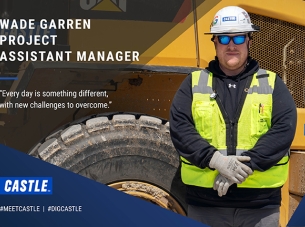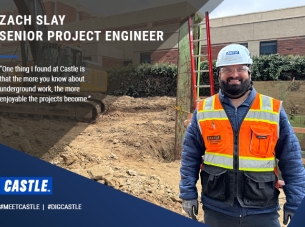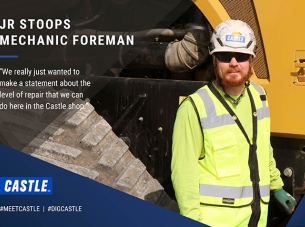Utilizing Directional Boring for Safer Utility Installation

Directional boring is a solution to a common construction challenge faced by developers the world over. While especially popular in busy urban centers, horizontal directional boring provides a non-invasive and low-impact way to install important infrastructure efficiently.
What Is Directional Boring?
Directional boring (also referred to as horizontal directional drilling or simply directional drilling) is a minimal impact, trenchless excavation method. This process uses a directional drilling rig on the surface to install utilities along a path underground without digging open trenches for the entire utility length.
What Are the Benefits of Directional Drilling?
Imagine managing new construction on a busy sprawling university or hospital campus. Plans have been made for a new building project that will attract new students and staff. The new facility is an enormous undertaking, considering the campus has been built over the course of 50 years or more and the campus attracts thousands of visitors daily.
This new building project is in the middle of it all, alongside decades-old infrastructure, roads and pedestrian routes. Before the new building can be erected, infrastructure must first be updated. There’s a complex web of electrical, cable and plumbing infrastructure underground, and documentation gets less reliable the further back in time it reaches.
The Infrastructure Solution: Directional Boring
Underground utility boring can be disruptive in such an environment, but horizontal directional boring offers an attractive solution. Working from prepared potholes away from busy roadways or sidewalks, directional drilling offers a smaller footprint while achieving the same results.
How Does Directional Boring Work?
Horizontal Directional Drilling (HDD) is a proven process that involves specialized equipment. A directional boring machine is designed to handle the unique stresses of horizontal drilling over distances ranging from just a few yards to several hundred yards if required.
The four-step process for successful horizontal drilling is as follows:
- Starting with small potholes, an experienced directional boring crew exposes known utilities along the path to determine exact utility depths.
- A small pit is excavated at the start and endpoints. Then, a rotating drill rod with a bit attachment is used to create a small diameter pilot hole along the path from the start point to the endpoint.
- Next, the pilot hole is enlarged as the drill pipe bores back and forth along the alignment using a larger drill bit attachment until enough space is created to allow installation of the utility. Dirt and debris are extracted along the way.
- Finally, the utility is pulled through the enlarged borehole for the length of the pathway. Crews patch up the small pits and the area above the entire alignment is unaffected.

Directional drilling is commonly used where cut-and-cover utility installation is not ideal, typically where the pathway encounters obstacles.
Directional boring can work beneath pedestrian pathways, roads, railroads, wetlands, water bodies or in areas with dense utilities.
In these sensitive areas, directional boring offers many benefits including to:
- Mitigate traffic disruption
- Enhance safety
- Reduce existing utility disruption
- Provide deeper or longer installation
- Reduce installation time
- Increase directional capabilities
- Potentially reduce construction and restoration cost
The Added Value of Subsurface Mapping
The key to the successful execution of utility projects is collaborating early and planning detailed task sequences. Understanding campus operations, how to efficiently put work in place and maintaining public safety are major objectives for the project team. That’s why detailed knowledge is paramount prior to planning an infrastructure upgrade.
Combining subsurface utility mapping with directional drilling creates a valuable set of resources to enhance safety and minimize demolition for your project.
Castle performs initial subsurface utility mapping to get an accurate picture of the exact position and location of existing utilities, live or abandoned. This provides data to minimize the potential for dangerous utility impacts that could stop service by informing design, planning the work and increasing safety. The mapping deliverable also provides owners with accurate documentation they can use for facility management and future planning. In fact, mapping deliverables are a tool that can be updated for the life of the facility.
Mitigate Surface Impact Without Sacrificing Results
Determining the most effective excavation method for an infrastructure upgrade is crucial to setting your project up for success. Directional boring offers an innovative solution for safer, non-invasive utility installation, especially on a busy site with potential surface obstacles. With early and accurate information gathering, an experienced construction team can determine if directional boring would be right for your site. Contact Castle today to learn more about our services and the many ways we can get your project off the ground.
About the Author
Castle Project Director Kurt Dulle is responsible for leading the firm’s Omaha office. He oversees a team specializing in managing and estimating projects for mechanical, electrical, plumbing, fire protection and utility clients.
Balancing quick turnaround, smaller-volume projects with large projects, plus emergency response services, is a daily responsibility. During his career, Dulle has served as a laborer, estimator, project manager and project director, providing him with a deep understanding of hands-on site work while building exceptional knowledge to develop accurate costs and schedules.





